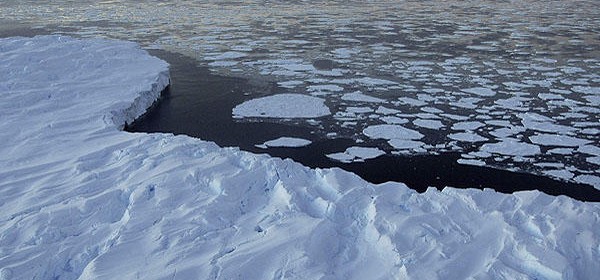The big melt: Antarctica’s retreating ice could re-shape Earth

CAPE LEGOUPIL, ANTARCTICA: From the ground in this extreme northern part of Antarctica, spectacularly white and blinding ice seems to extend forever. What can’t be seen is the battle raging thousands of feet below to re-shape Earth.
Water is eating away at the Antarctic ice, melting it where it hits the oceans. As the ice sheets slowly thaw, water pours into the sea — 130 billion tons of ice per year for the past decade, according to NASA satellite calculations. That’s the weight of more than 356,000 Empire State Buildings, enough ice melt to fill more than 1.3 million Olympic swimming pools. And the melting is accelerating.
In the worst case scenario, Antarctica’s melt could push sea levels up 10 feet worldwide in a century or two, recurving heavily populated coastlines.
Parts of Antarctica are melting so rapidly it has become “ground zero of global climate change without a doubt,” said Harvard geophysicist Jerry Mitrovica.
Here on the Antarctic peninsula, where the continent is warming the fastest because the land sticks out in the warmer ocean, 49 billion tons of ice are lost each year, according to NASA. The water warms from below, causing the ice to retreat on to land, and then the warmer air takes over. Temperatures rose 5.4 degrees Fahrenheit in the last half century, much faster than Earth’s average, said Ricardo Jana, a glaciologist for the Chilean Antarctic Institute.
Peter Convey of the British Antarctic Survey reflected on changes he could see on Robert Island, a small-scale example and perhaps early warning signal of what’s happening to the peninsula and rest of the continent as a whole.
“I was last here 10 years ago,” Convey said. “And if you compare what I saw back then to now, the basic difference due to warming is that the permanent patches of snow and ice are smaller.”
Over at NASA, ice scientist Eric Rignot said the melting “is going way faster than anyone had thought. It’s kind of a red flag.”
What’s happening is simple physics. Warm water eats away at the ice from underneath. Then more ice is exposed to the water, and it too melts. Finally, the ice above the water collapses into the water and melts.
Climate change has shifted the wind pattern around the continent, pushing warmer water farther north against and below the western ice sheet and the peninsula. The warm, more northerly water replaces the cooler water that had been there. It’s only a couple degrees Fahrenheit warmer than the water that used to be there, but that makes a huge difference in melting, scientists said.
At its current rate, the rise of the world’s oceans from Antarctica’s melt would be barely noticeable, about one-third of a millimeter a year. But if all the West Antarctic ice sheet that’s connected to water melts unstoppably, as several experts predict, there will not be time to prepare. Scientists estimate it will take 200 to 1,000 years to melt enough ice to raise seas by 10 feet, maybe only 100 years in a worst case scenario.

 Print
Print